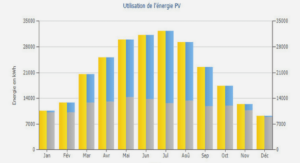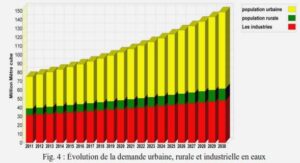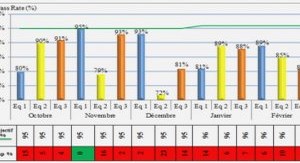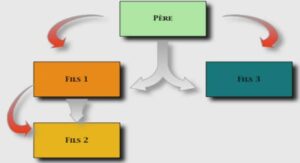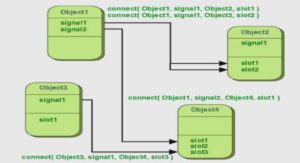Carbone organique à l’échelle d’un bassin versant agricole
Measurement of suspended sediment concentrations in rivers
There are many different techniques of suspended sediment concentration presented by Wren et al. (2000) such as acoustic, bottle sampling, pump sampling, focused beam reflectance, laser diffraction, nuclear, optical and remote spectral reflectance methods. Only some methods from existing literature are presented as following:
Water sampling
This method is very simple and direct. We conduct the sampling manually or by automatic sampling then we filter the water through filter paper such as nitrocellulose filter (GF 0.45 µm) or glass microfiber filter paper (Whatman GF/F 0.7 µm). After that, the filter is dried in an oven and then weight in order to determine suspended sediment concentration (SSC). Glass microfiber filter can be burnt to analyse other particulate matters such as particulate organic carbon etc.
Turbidity measurement
This method is mostly preferred to measure continuously the suspended sediment in the streams (Gippel 1995; Sadar 2002; Downing 2005). Continuous records of SSC can be obtained simply and conveniently by monitoring the turbidity of the river water, provided there is a close relationship between fluctuations in sediment concentration and turbidity. Thus, it needs sampling of SSC for a large range of hydrological conditions (high flow and low flow). Turbidity can be defined as an optical property of a water sample, which measures the degree to which a beam of light passing through the water is absorbed or scattered. Turbidity can be measured by turbidimetry or nephelometry (Minella et al., 2008). The former measures the attenuation or absorption or a ray of light as it passes through a liquid medium and the latter measures the degree of scattering that the light undergoes. Scattering refers to the light that is reflected or refracted by the surface of a particle, and absorption refers to light that is transformed into other forms of energy (such as heat) upon collision with a particle.
Acoustic method
Short bursts ( ≈10µs) of high frequency sound (1 to 5 MHz) emitted from a transducer are directed toward the measurement volume. Sediment in suspension will direct a portion of this sound back to the transducer (Thorne et al., 1991). When the sediment is of uniform size, the strength of the back scattered signal allows the calculation of sediment concentration. The water column is sampled in discrete increments based on the return time of the echo. The backscattered strength is dependent on particle size as well as concentration. This method is advantageous for good spatial and temporal resolution and measures over wide vertical range and nonintrusive. However, backscattered acoustic signal is difficult to translate and the signal attenuates at high particle concentration.
Acoustic
Doppler Current Profiler (ADCP) method Various authors (Holdaway et al., 1999; Hoitink et Hoekstra, 2005; Dinehart et Burau 2005; Kostaschuk et al., 2005) have used ADCP method in their studies. This method is based on the same principle as acoustic method but used the profiler Doppler, dedicated initially to flow measurement. Indeed, the signal intensity gives information on suspended sediment concentration in water column by the sonar equation. This method is importantly advantageous to be capable of measuring the complete profile within the river cross-section rapidly. Yet, the calibration through sampling method is necessary to inverse the intensity Chapter 2. Suspended sediment, organic carbon transport and modelling signal in concentrations. The measurement can carry out continuously by using a senor type H-ADCP, installed permanently on the river bank.
Nuclear
Method Nuclear measurement utilizes the attenuation or backscatter of radiation. There are three basic types of nuclear sediment gauges: (1) those that measure backscattered radiation from an artificial source; (2) those that measure transmission of radiation from an artificial source; and (3) those that measure radiation emitted naturally by sediments (McHenry et al., 1967; Welch et Allen., 1973; Tazioli 1981). The first two have the broadest applicability. In backscattered gauges, radiation is directed into the measurement volume with the radioactive source isolated from the detector by lead. A sensor in the same plane as the emitter measures radiation backscattered from the sediment. In transmission gauges, the detector is opposed to the emitter and the attenuation of the radiation caused by the sediment is measured and compared to the attenuation of the rays caused by passage through distilled water. The ratio between these measurements allows calculation of sediment concentration. This method has low power consumption and can measure wide particle size and concentration range but the sensitivity is low.
Introduction générale |
